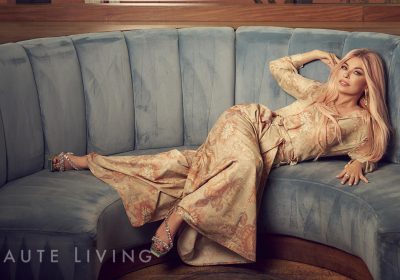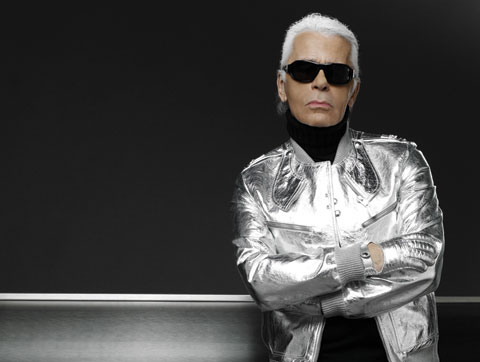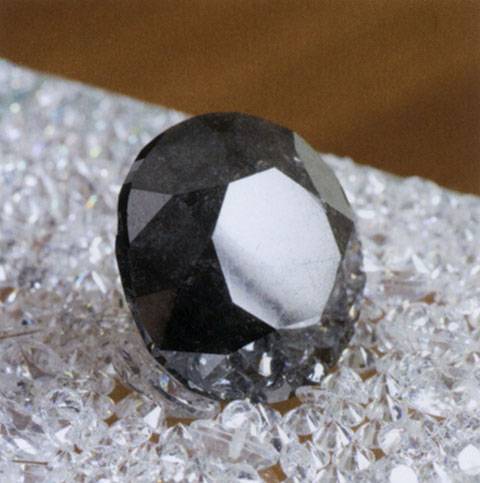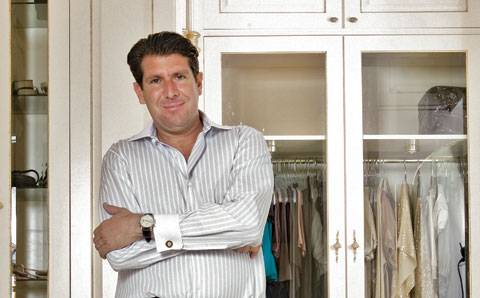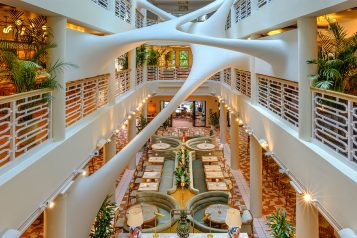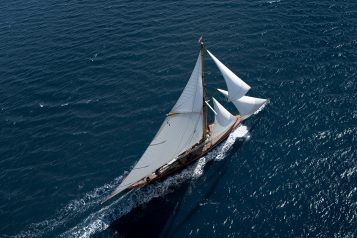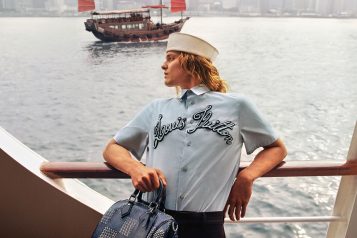Chanel hits the road with the Mobile Art Container, a touring tribute to the House that Coco built.
By Mariel Rittenhouse
The quilted Chanel bag was first conceived by Mademoiselle Gabrielle Bonheur “Coco” Chanel in February 1955 and has been consistently reinterpreted by Lagerfeld, as well as a slew of unauthorized charlatans.
Fashion and art are fairly steady bedfellows: Both require a flair for the unexpected, wellsprings of patience, maniacal collectors, and bottomless pockets—or at least bottomless pockets in the pants of investors. But perhaps the ultimate requirement of a successful artist is the ability to enthrall a room, to leave the audience swooning, coveting, questioning. The captive crowd is the showman’s greatest accomplishment. Well, that, and a padded bank account.
Karl Lagerfeld, the wizard behind the Chanel curtain, is the master showman. His performances (by way of his costumed catwalking mannequins) are rarely short of sensational and always hotly discussed by fashion critics and fashionphiles alike.
Lagerfeld is the consummate artiste so the announcement that Chanel had teamed up with architect Zaha Hadid to create a Mobile Art Container came as a surprise, but it wasn’t an entirely atypical tandem for the Sultan of Style. Lagerfeld has worn many, many hats over the course of his illustrious career.
Officially dubbed “Mobile Art, Chanel Contemporary Art Container by Zaha Hadid,” the pavilion will embark upon its inaugural world tour in 2008, opening in Hong Kong toward the beginning of the year and continuing through to Tokyo, New York, Los Angeles, London, and Moscow, before concluding in Paris in 2010. But according to Bruno Pavlovsky, president of Chanel’s Fashion Activities, mum’s the word on a hard and fast schedule as “it is still too early to unveil the final dates for each city.”
So what is a “Mobile Art Container?” Put simply, it’s a moveable gallery. The space is a futuristic pavilion created by Zaha Hadid and is designed as a staging ground for 20 internationally renowned artists to exhibit pieces inspired by Chanel’s iconic, oft-imitated, quilted bag—a worthy muse, according to many savvy globetrotters.
The quilted Chanel bag was first conceived by Mademoiselle Gabrielle Bonheur “Coco” Chanel in February 1955 and has been consistently reinterpreted by Lagerfeld, as well as a slew of unauthorized charlatans. In the field of fashion, a quilted bag by any other name is not a Chanel quilted bag. It’s an icon, an objet and it’s an integral planet in the Chanel universe, alongside other emblematic creations, like the LBD (little black dress), the tweed suit, the camellia, the string of pearls, the chain belt, the two-tone shoe, and Chanel No. 5, to name a few.
The Mobile Art Container is then, essentially, Chanel’s love letter to itself—a self-congratulatory, albeit well deserved, pat on the back. Everything, right down to the design of the gallery, echoes, insinuates, harks back to that quilted bag.
The House of Chanel has collaborated with many architects over the years; one of the most notable partnerships has been with Peter Marino, who conjured up several of the brand’s stores including the boutique-cum-gallery flagship in Hong Kong. Pavlovsky says, “For this exhibition, we wanted to create something totally different with its own form of expression. This is why Karl Lagerfeld and Chanel chose Zaha Hadid. Her designs are fluid and forward-looking, and this seemed appropriate for a project as daring and exciting as this one.”
Lagerfeld and Hadid first met in the lobby of the Mercer Hotel in New York. Per Pavlovsky, “As Karl Lagerfeld said at the Mobile Art launch in Venice, this shows how important public spaces like hotel lobbies can be!”
Hadid is a celebrity in her own right: She was awarded the Pritzker Prize (considered to be the Nobel Prize of architecture) in 2004, and edifices like the Phaeno Science Center in Wolfsburg, Germany, the Rosenthal Center for Contemporary Art in Cincinnati, and the BMW Central Building in Leipzig, Germany, have all been lauded as benchmarks of bold, transformative architecture.
Her concept of total fluidity—of integrating natural topography and man-made systems with cutting-edge technologies to create complex, seamless, geometric structures—is her calling card, and what ultimately landed her the gig at Chanel.
The Mobile Art Container is the epitome of Hadid’s seamless vision, resulting in a structure that looks more UFO than art gallery, which is actually sort of the point. According to curator Fabrice Bousteau, “Mobile Art is not so much an exhibition to be visited as a landscape to wander through in a completely new way: To experience the artists’ installations, visitors, equipped with a digital handset, must let themselves be guided mentally and physically by a soundtrack composed in collaboration with the artists taking part.”
The experience of “wandering through” Mobile Art is then indeed an alien experience since it’s an original and global work. The architectural structure of the pavilion fuses a series of continuous arch-shaped elements with a courtyard in its central space. Taking into account Mobile Art’s world tour, the glazed ceiling adjusts to allow for control of the interior temperature in response to the particular climate conditions of each venue city.
In that same vein, while the assembled structure is massive—more than 7,500 square feet—due to the long haul shipping between seven distant cities, each structural segment is a maximum of just 7.4 feet wide. It takes many pieces to build this puzzle.
And without the commissioned artists, the puzzle is left unfinished. Bousteau was primarily in charge of selecting the artists and Pavlovsky says, “He chose people whose artistic content demonstrated ‘freedom, commitment, high standards, and innovation.’”
Bousteau brought together a final headcount of 20 artists “from different generations and from different countries and cultures to illustrate the globalization of contemporary art.” But of course “the 20 artists were submitted to Karl Lagerfeld for approval.”
The approved roster includes boldface names like Yoko Ono, who has created a special “Wish Tree” for Chanel, David Levinthal, Stephen Shore, Sophie Calle, Nobuyoshi Araki, and Subodh Gupta, among others.
Pavlovsky adds that these artists were all “interested in creating works that take into account the constraints imposed by Zaha Hadid’s architectural setting,” constraints (or challenges) like artificial light pushing up from gaps between the walls, raised floors to emphasize the “arched” structure, and a blurred relationship between interior and exterior.
According to Pavlovsky, “The full range of art forms currently being used in contemporary art—installation, video, photography, sculpture, performance, audio—will be represented in Mobile Art.” Without selling the farm, a few standouts include Ono’s aforementioned participatory “Wish Tree;” Lee Bul’s “Light Years,” which is a cybernetic sculpture crowned with hundreds of pieces of re-assembled bags and chains; and Araki’s “Kaori and Flowers,” a 10-minute slideshow that revisits “The Dance of the Seven Veils” using the heavenly body of a young woman unraveling herself from Chanel bag chains.
The 20 artists were given “complete freedom to create artworks inspired by the elements of Chanel’s quilted handbag,” Pavlovsky says. “Chanel wanted a totally external vision, and there is indeed a very experimental freedom in all the artworks.”
And by freedom, Pavlovsky means freedom: Unlike the Chanel quilted bag, the Mobile Art gallery won’t threaten the wallets of the well-heeled—it’s accessible to all and absolutely free of charge.


